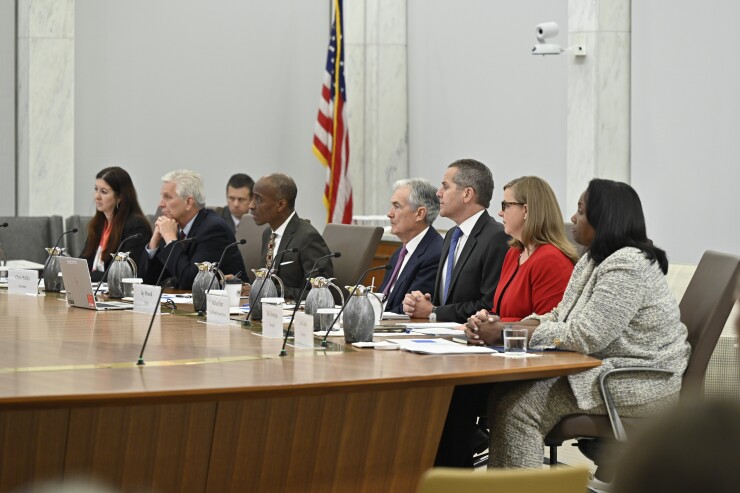
Prices grew moderately last month according to the Federal Reserve's preferred
The Bureau of Economic Analysis' personal consumption expenditures, or PCE, price index for September rose 2.1% year over year, down from August's 2.3% growth and the lowest since early 2021.
Core PCE, on which the Fed bases its 2% annual inflation target, held steady at 2.7% growth year over year. Core PCE excludes volatile commodity-related cost categories such as food and energy. Month to month, overall prices climbed 0.2% in the headline PCE index and 0.3% in the core reading. The core reading's growth was the highest since April.
The modest pickup in price growth was expected by financial market participants and policymakers alike, and increases the odds that the Federal Open Market Committee lowers its
Thursday's PCE reading is the final major inflation report of the month, following the Bureau of Labor Statistics' consumer price index, or CPI, and produce price index, or PPI, both of which showed price growth remaining steady in September.
During its September meeting, the FOMC dropped the target range on the federal funds rate by
Bankers have
Thursday's PCE reading appears to have strengthened market confidence in a further rate reduction next week. Before the report was published, more than 92% of federal funds futures traders were pricing in a 25-basis-point reduction, according to CME Group's Fedwatch tool, compared with 7.5% who expected no change. After the report, the trading volume pricing in a cut ticked up north of 96%.
In a
Waller said such an uptick would not be a "welcome development" in the Fed's push to tamp down inflation, but as long as the index remains near the Fed's 2% target, one elevated reading is no cause for concern.
"We have made a lot of progress on inflation over the course of the last year and a half, but that progress has clearly been uneven — at times it feels like being on a roller coaster," he said. "Whether or not this month's inflation reading is just noise or if it signals ongoing increases, is yet to be seen. I will be watching the data carefully to see how persistent this recent uptick is."
Other Fed officials have viewed recent data less optimistically. Fed Gov. Michelle Bowman — who
"While it has not been my baseline outlook, I cannot rule out the risk that progress on inflation could continue to stall," Bowman said.
Fed Gov. Adriana Kugler, who "strongly supported" the half-point cut last month and the pivot to focusing on safeguarding the labor market, said in remarks on Oct. 8 that the FOMC should stand ready to react to down risks that threaten either employment or price stability.
"If downside risks to employment escalate, it may be appropriate to move policy more quickly to a neutral stance," Kugler said. "Alternatively, if incoming data do not provide confidence that inflation is moving sustainably toward 2%, it may be appropriate to slow normalization in the policy rate."
The Fed is still awaiting one more critical dataset before next week's FOMC meeting: the Bureau of Labor Statistics' employment situation summary, which will detail overall payroll gains and the jobless claims from October. That report is due out Friday morning.






